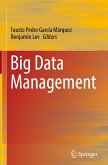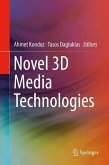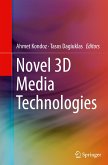This book focuses on a special group of auditory interfaces using spatial sound for the representation of information. The addition of information on the location of a selected sound source or a group of sources shows many advantages over a mere single-channel audio. This survey explains the most important limitations of the human hearing system and the perception of spatial sound. It also includes some technical background and basic processing and programming techniques for the creation and reproduction of spatial sounds with different audio equipment.
Spatial auditory interfaces have evolved significantly in the last couple of years and can be found in a variety of environments where visual communication is obstructed or completely blocked by other activities, such as walking, driving, flying, operating multimodal virtual displays, etc. An entire chapter of this survey is dedicated to the most important areas of spatial auditory displays: mobile devices and computers, virtual environments, aircrafts and vehicles, visually impaired and blind computers users, and brain-computer interfaces.
Spatial auditory interfaces have evolved significantly in the last couple of years and can be found in a variety of environments where visual communication is obstructed or completely blocked by other activities, such as walking, driving, flying, operating multimodal virtual displays, etc. An entire chapter of this survey is dedicated to the most important areas of spatial auditory displays: mobile devices and computers, virtual environments, aircrafts and vehicles, visually impaired and blind computers users, and brain-computer interfaces.
"The standard of English used throughout is excellent ... . The subject is very specialized and the authors do a good job with it. Scientists and developers in the field of audio human-computer interfaces will find this book a good up-to-date summary of the state of the art." (G. M. White, Computing Reviews, computingreviews.com, July, 2016)








